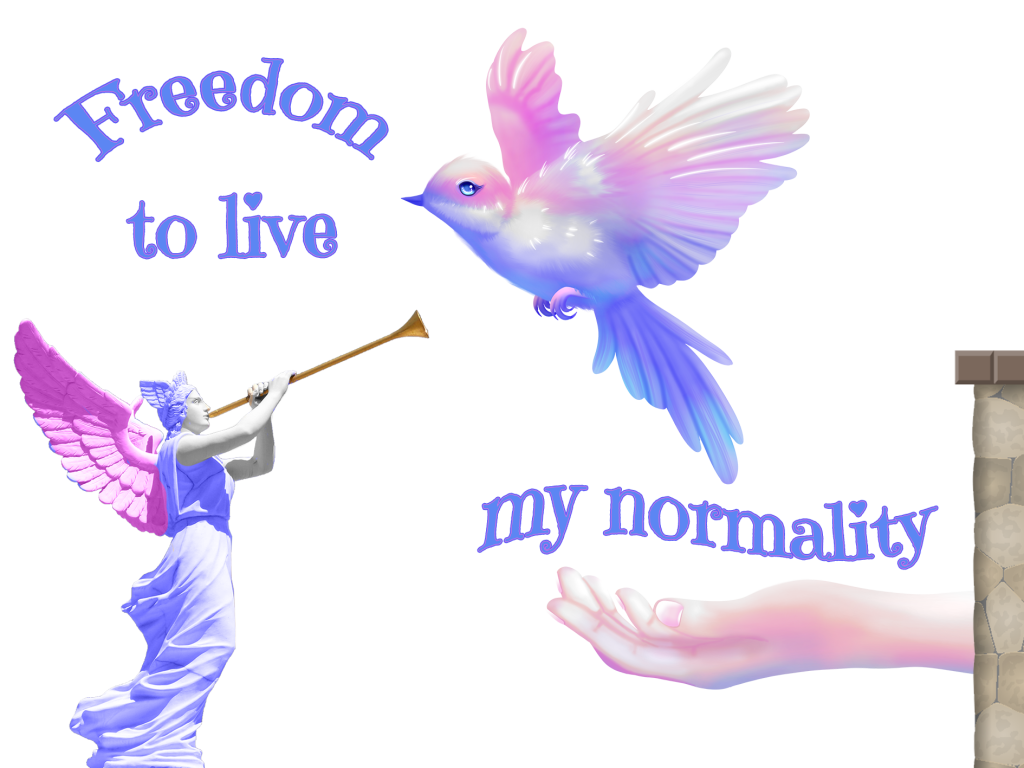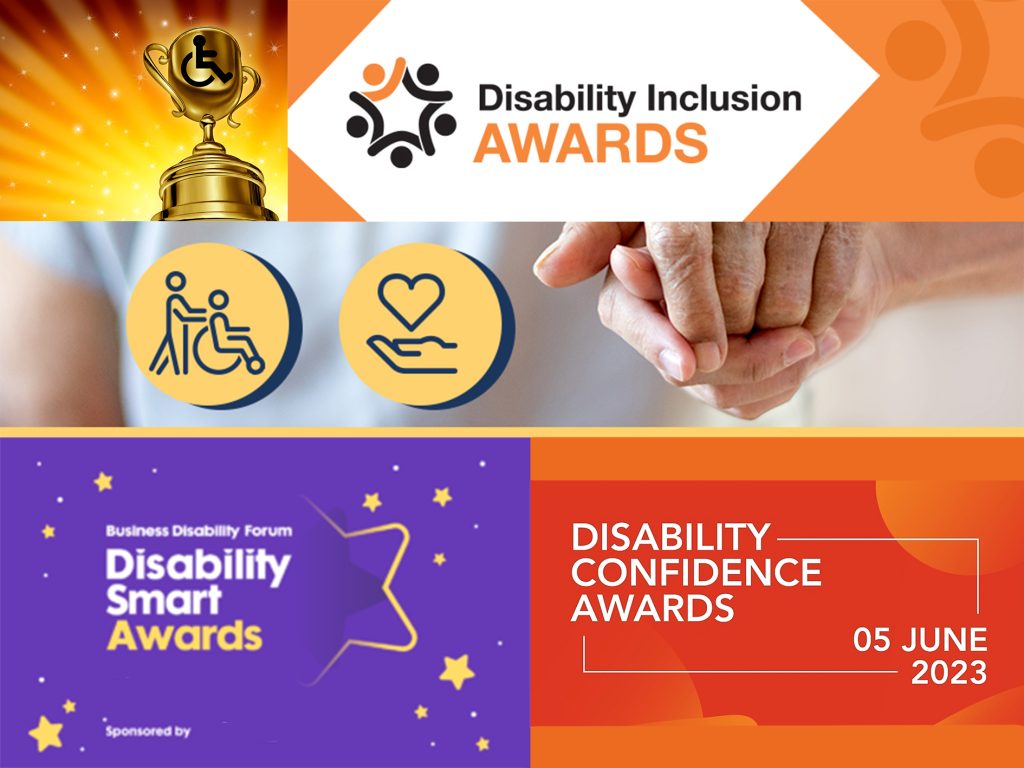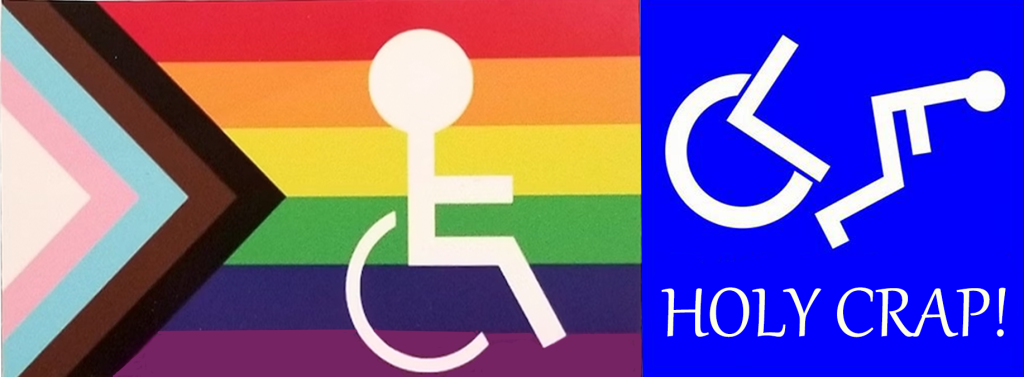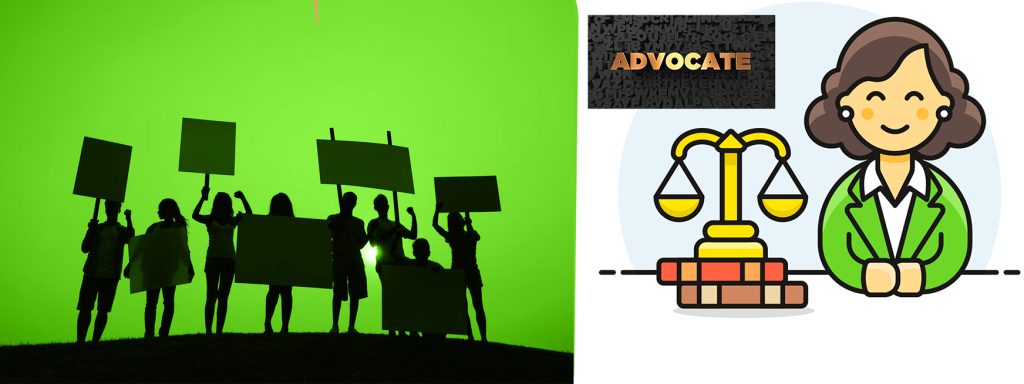Access and Inclusion Plans are compliance “MUST DO” suffocating conscience insight

Music is composed in the mind before it is recorded on paper or digitally in our physical world.
Access and inclusion plans are supposed to identify and can lead to addressing barriers to inclusion. The plans are directed to have an aim of inspiring improvements to accessible and inclusive communities, agencies and practices for people living with ‘disability’. However, these plans are central to the academic social model of ‘disability’ framework which our revolving governments have blindly committed all citizens to. It is the law, and all citizens must appear to be abiding by what and how the law directs unless a loophole can be exploited.
Pollyanna is a simple little book about how to play ‘the glad game’. Aunt Polly sure had some lessons to learn about being glad. Having blind optimism in seeking happiness does not overcome discomfort, pain, and malevolence.
Must do vs human conscience insight.
Conscience insight is real in reading, thus hearing the emotional words of a man whose hearing was failing. Ludwig van Beethoven in 1802 recorded on paper his thoughts when leaving his country abode to return to living his normal in the city. “I bid you farewell and sadly too, yes the cherished hope which I brought here with me, that I might be cured at least up to a point. It must abandon me completely now, as autumn leaves fall away, wither; so has it too wilted for me, I go from here much as I came even the high courage that often inspired me during the lovely days of summer has vanished. Oh providence grant me one day of pure joy, the inner reverberation of true joy has so long been a stranger to me. Oh when? Oh when? Oh deity may I feel it once more in the temple of nature and mankind – never? No, oh it would be too hard.”
The plans are about process, procedure, data, and reporting and not empowerment of individuals. The wording enthuses outcomes for ‘people with disabilities’ of same opportunity as the ‘other’ people. In some plans the ‘disability’ word is being subtlety avoided, Kumbaya, “we are doing this for everyone, your impairment is invisible to us”.
Examples in corporate plans like “’People with disability’ have the same opportunities as other people to make complaints… or ‘People with disability’ receive the same level and quality of service” Hello, really? A disability access and inclusion UNCRPD (academic / legal / political jargon) plan is required to achieve these outcomes?
The annual ‘disability’ access and inclusion plan progress report is intended to identify achievements, challenges, and trends over the preceding year.
Tick, pat, smile.
To be expected to be “optimistic, positive, and strong” when the situation does not robotically permit such an attitude does not help to heal the soul.
“When the oceans rise and thunders roar, I will soar with you above the storm.” People usually like individuals more than the groups that the same individuals comprise because the person-positivity bias is a strong one. The positive bias humans have for their fellow man is still the glue that holds society together and helps bond us to one another.
Our ANZAC soldiers are an illustration of and a living memory of positive human bias. Fighting shoulder to shoulder with a mix match of men from all types of ethnic, career, ages, religious, political, and family backgrounds.
A law that needs enforcement can never be a substitute for people bonding.
People are brought to tears at ‘disability’ access and inclusion plan progress award nights due to various victorious access and inclusion stories being recalled. Emotional stories about the one ‘disabled’ person here, the one ‘disabled’ person there, obtaining what the majority of the audience takes for granted. Did anyone notice where the people in wheelchairs were positioned in the auditorium or banquet room?

‘Disability’ access and inclusion plans are promoted as a tool to be used to explore, identify, and review issues around access and inclusion, but follow up action for solution may never occur. The plans are absolutely restricted by budgetary constraints, complaint type, and management priorities.
‘Walk in my shoes’ in a particular location type of activities, are said to provide plan makers an appreciation of the challenges faced by ‘disabled people’, and are applauded as giving committees and advisors a perceived insight into the real life of a ‘disabled person’ accessing their local community. The window blind is opened for some to fleetingly see what is contained within the narrow or wide window framed scene.
The ‘walk in my shoes’ may result in a wheelchair accessible gazebo in the park being built yet, the unseen uneven footpaths and step kerbsides are ignored.
Then we can review an initiative of beach wheelchairs and sand ramp being provided at a specific beach on Saturday mornings from 9.00am to 12.00pm provided the surf life saver volunteers are around to set up and monitor.
An annual flag raising ceremony to visually recognise ‘disabled people’ as a valued part of the community is an utter nonsense, but it has been considered by disability access and inclusion planners as wonderful recognition of diversity in their community.

A ‘walk around’ town by ‘disabled people’ and access consultants to develop an ‘of concern’ report to be handed to various departments with the responsibility of paving, signage and other elements for appropriate action do not cut the grade either. Concerns being noted as the ‘disability’ access and inclusion plan dictates is a must do… followed by another plan of action… followed by another plan of timing… followed by another plan of financing… followed by another plan of authorisation… followed by another plan for implementation…
People living with ‘disability’ want to be treated as other people are treated and not picked up out of the crowd and assessed like they have problems that need to be accommodated.
Yet, ‘disabled people’ today continually appear before the societal judges. Once judged as being able to fit into the abnormal category box in requiring additional support the ‘disabled person’ is given the ok to be permitted to wear the ‘normal person’ badge as an emblem of being arbitrated by society as being ‘disabled’ by society and not having any personal ‘disability’ to be overcome.
In the meantime, no one is fixing the theatre seating or the front entrance of the Land of a Thousand Hills Café.
The ‘social model of disability’ is abandoning impaired peoples’ ability to fend for themselves in society. Living their life their own way. Somethings are not being allowed to be seen. Compliance to the tick box is blinding.
Regardless of how much or little destruction blindness can bring into a person’s way of life, a blind person given the gift of sight becomes a total stranger to their old way of living. Sight allows them to totally transform. To decide from seeing what their world offers them instead of being grateful for another’s vision of where they fit into society’s ‘disabling’ world.
‘Disability’ advocacy is often misunderstood and there is a good reason why… It is complex and all over the place and many who might need the government funded service do not know the model exists. If we are honest about the government funded ‘disability’ advocacy model it is nothing more than social worker assistance to find service providers and to manage all the expected ‘disability’ complaints.
‘Disability’ advocates are needed in the funding model to support the ‘disabled people’ access and exercise their United Nations given ‘disability’ rights. That is United Nations given Human Rights. The word ‘human’ has been added to make the term appealing to the ill-informed masses. Bring a select few ‘disabled people’ out into the light of day so the spin doctors can get their message across that the new system, the academically revered, ‘social model of disability’ legislated into the world is to solve the failures of the past.
Waterloo… “The history book on the shelf is always repeating itself.”
The ‘social model of disability’ has given Australia the National Disability Insurance Scheme. Purportedly, the optimal approach for managing reform in ‘disability’ by adopting an insurance-based risk management framework, as distinct from the old welfare model. Who is kidding who?
NDIS supports around 10% of people living with ‘disability’ in Australia including many children with intervention for suspect developmental issues which are not necessarily veritable impairments. And at the same time the NDIS is outlawed to acknowledge a paraplegic’s 79 year held physical impairment of never having been able to walk. The 79-year-old paraplegic is not considered ‘disabled’ by society they are just aged.
Providing funds for a ‘disabled person’ to go on a trip to Paris or providing an educational scholarship or accommodation when a sibling or next-door neighbour, being an ‘able person’, is not provided with the same opportunity is not equal access to society. Rather such treatment of ‘disabled people’ is a charity giving them advantage that many in society do not have the economic means to enjoy. This type of model encourages manipulation of the system because it is based on advantage not liberation.
Around ten percent of people with ‘disability’ qualify for the taxpayer funded wham-bam-thank-you-ma’am scheme that reportedly has increased the support workforce by about 80,000 people. A political job creation scheme that at this moment in time the pollies think justifies the expenditure.
When a layman hears the word advocacy they think of public support for a certain cause. Their mind does not usually turn to the idea it is a social work profession that engages in case advocacy, legal advocacy, legislative advocacy, self-advocacy, and system advocacy to secure the professions view of social justice.
In ‘disability’ the advocate social worker is taking up the cause of others who are seen to be under stress, feel desperate, and powerless because their immediate human rights are not being met. It infers that ‘disabled people’ are a case to be socially managed if they fit the model.
The design intent of the social worker scheme is to provide a model that is independent to the National Disability Insurance Scheme and the service providers who are paid by that government agency to provide support services to some ‘disabled people’.
Independence is seen to matter to minimise a conflict of interest between an unemployment threat and the human rights of the ‘disabled’ person the advocate is supposed to be defending. The premise is there is a need to look after ‘disabled’ people because they are unable to look after themselves or navigate the complex laws and systems to gain their human rights access to society. The system itself is therefore untrustworthy and incapable of providing what was pledged.
The National Disability Advocacy Program states it “provides people with ‘disability’ with access to effective ‘disability’ advocacy that promotes, protects and ensures their full and equal enjoyment of all human rights enabling community participation”.
The program operates through the Australian Government Department of Social Securities and as of 15 November 2019 funded via the Disability Services Act, 1986, 62 ‘disability’ advocacy agencies around the country.
An amount of $167.39 million was allocated over four years from 1 July 2014 by the Australian Government for the Disability and Carer Support Activity. All amounts are GST exclusive.
Funding amounts included in these Programme Guidelines are estimates and may change in the course of the budget year as government priorities change.
National Disability Insurance Scheme funded supports are not the same as independent advocacy support and is not a substitute for the role of independent social worker advocates.
The Advocacy Program agencies may assist with issues that arise with the National Disability Insurance Scheme or with service providers. All ‘disability’ advocacy agencies funded under the National Disability Advocacy Program must comply with the Disability Services Act and the applicable standards.
The National Disability Advocacy Program defines Advocacy for people with disability as “speaking, acting or writing with minimal conflict of interest on behalf of the interests of a disadvantaged person or group, in order to promote, protect and defend the welfare of and justice for either the person or group”. A definition that was coined from writings of mental retardation specialist German American academic Wolf Wolfensberger.
There are six broad models cited:
- Citizen advocacy: matches people with disability with volunteers.
- Family advocacy: helps parents and family members advocate on behalf of the person with disability for a particular issue.
- Individual advocacy: upholds the rights of individual people with disability by working on discrimination, abuse, and neglect.
- Legal advocacy: upholds the rights and interests of individual people with disability by addressing the legal aspects of discrimination, abuse, and neglect.
- Self-advocacy: supports people with disability to advocate for themselves, or as a group.
- Systemic advocacy: seeks to remove barriers and address discrimination to ensure the rights of people with disability.
The target group for social worker advocacy support provided by National Disability Advocacy Program agencies, as required under section 8 of the Disability Services Act, 1986, consists of people with disability that:
- is attributable to an intellectual, psychiatric, sensory, or physical impairment or a combination of such impairments
- is permanent or likely to be permanent, and
- results in:
- a substantially reduced capacity of the person for communication, learning or mobility, and
- the need for ongoing support services.
“If you have a disability or have family member, friend, or neighbour who might need further support navigating the NDIS, you can search the Disability Advocacy Finder to find Commonwealth, state, and territory government funded disability advocacy agencies in your local area.” First2care.
A social worker ‘disability’ advocate may arrange referrals, offer advice, provide emotional support, alert service providers about needs, appear on another’s behalf, speak or write to raise awareness of problems and seek solutions, negotiate complaints, and many other actions.
A ‘disability’ advocate may be a paid professional or operate on a volunteer basis.
A paid advocate is responsible and accountable to the agency that provides their funding. They are in effect a case social worker with a selection of people to look after.
The paid workforce enters into a contract relationship with whom employs them. The contract determines where, when, and how the job will be done and both parties are free to terminate the contract as circumstances or desires change.
Volunteers can be a great workforce. Volunteers can be wonderful — low cost, dedicated, passionate, and easy to work with, however, like paid labour they are free to come and go as their lifestyle and desire to help fluctuates.
The typical image of activism is members of a group in a public protest, such as a rally, sit-in, march, or public meeting. Activism is speaking up, drawing public attention to an important issue that appears to be overlooked.
The typical image of advocacy is someone actively supporting a cause and trying to get others to support it as well. Advocacy is speaking up, drawing attention to their important issue and directing decision makers towards a solution.

‘Activism’ is considered by many to be a dirty word and depicts radical and violent overtones. Whereas, ‘Advocacy’ is considered as a respectful dialogue, with friendly exchanges and negotiations to achieve mutually acceptable aspirations. The advocate is welcomed into the conference room to be listened to while the activist is silenced by the closed windows and doors and switched off media channels. Advocacy is seen to reform the system by being within the system to apply changes to the system. Activism is seen as actions taken by disgruntled people outraged and urged to so something.
The entire purpose of activism is to create people power that can compel decision-makers, chiefly in government, to decree change. Advocacy is seen to obtain agreement through private, quiet, knowledgeable, influence whereas activism is seen as a loud, ignorant, extremist, public fight. Advocacy is usually paid for, activism is not.
To save time and headaches all one has to do is implement what is wanted by following the agreed framework. When scientists, academics, lawyers, and politicians think they know how something works best, a lovefest ensures a difficult navigation to get contrary and eccentric ideas considered because they are outside the frame. Consultation is kept within accepted industry advocacy relationships, tokenistic, the ‘chosen few’ are consulted and listened to which results in the implementation of ‘group think’ policies which in truth have already been decided upon.
The gameplaying overrides the elapsed humanitarian and public interest intent.